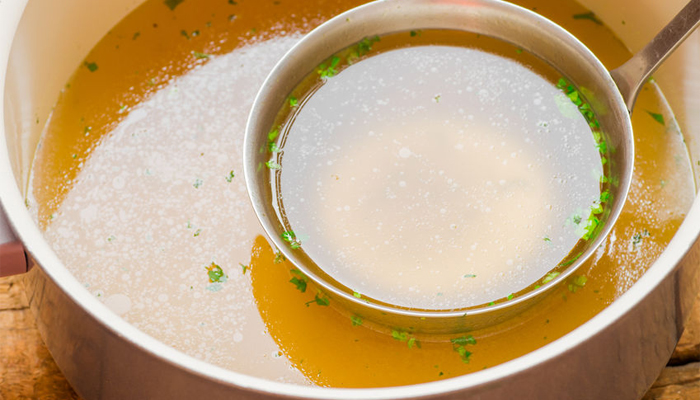
In years, past bone broth was considered a tonic and was given to those that had a cold, sinus congestion, stomach upset and so on. Medicinal purposes aside, bone broth is hearty and full of nutrients. The marrow in the bone is loaded with nutrients, amino acids, and minerals that the human body needs. The broth can be sipped as a high protein drink or used as a base for stews, soups, sauces, and gravies.
You can use any bones but traditionally beef bones were used because of the high marrow content. Chicken bones, deer, elk, bison, and so on can be used, of course, to create various flavors. In some cases, the bones are simmered for days at a time.
When cutting up onions, carrots, and celery, or peppers or virtually any vegetable save the scraps for the broth. You can either place the scraps directly in the water or wrap in cheesecloth and tie off. If you boil the bones for 24 hours or so, they will start to crumble, so you will want to strain the broth.
Roasting the bones in a pan in the oven or over a fire before boiling can add more flavor because any fat left on the bones will caramelize. Once the bones are removed deglaze the pan with some red or white wine or fruit juice of choice and pour the liquid right from the pan into the pot you are boiling in. This not only adds flavor, but the roasting of the bones will also give your broth a dark rich color.
Once the broth has cooled, the fat will congeal. You can either remove the layer of fat, which will solidify on top or leave as is. Heating will, of course, liquefy the broth.
Once you have a broth of any kind, the possibilities are endless when it comes to making meals. Add some vegetables and you have a stew, or mix in with ground beef to make meatloaf or even hamburgers. The broth will be concentrated so you can thin it down with any liquid when adding to a recipe.
When butchering wild game or domesticated livestock keep the bones in mind and freeze them if you have to if you don’t have time to roast and boil them. They are too valuable as a food source to toss aside. Once you have your broth made, you can freeze it for future use.